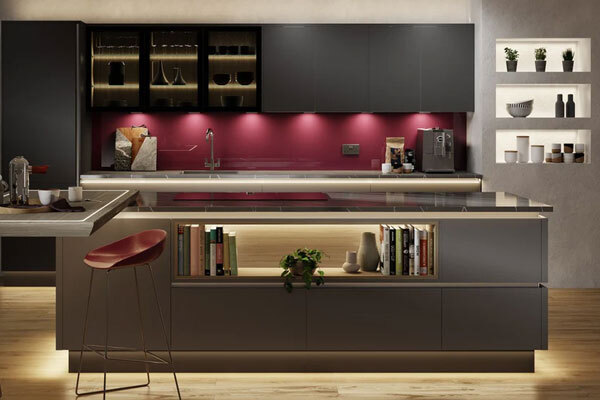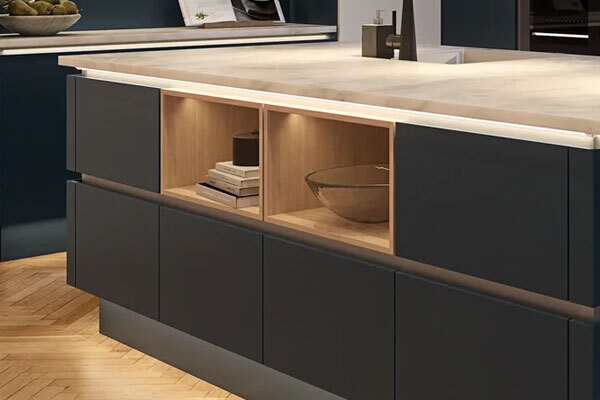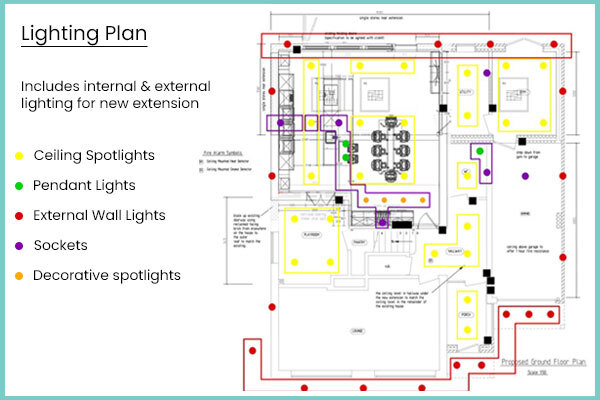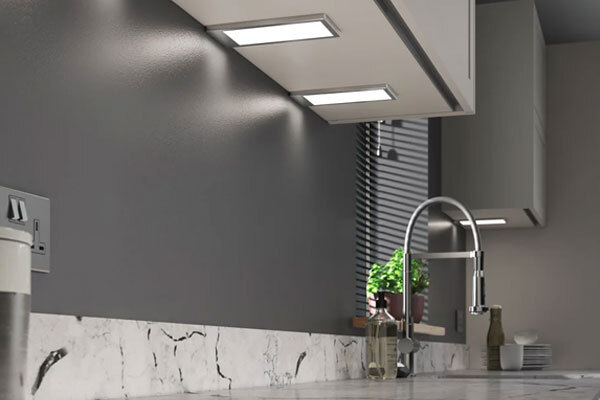Top Kitchen Lighting Design Guide & Best Tips for Task Lighting
Posted by Lorraine on 6th May 2025

Getting your kitchen lighting right is one of the most important parts of your kitchen design. A well-thought-out kitchen lighting plan does more than just brighten the room, it helps you cook safely, highlights key features, and sets the right mood for dining and entertaining.
Whether you're renovating or starting from scratch, this guide offers the best tips for planning and installing kitchen lighting that works beautifully and efficiently.
Why a Thoughtful Kitchen Lighting Plan Matters
Your kitchen serves many roles: a cooking area, a place to eat, and often a social hub. A successful kitchen lighting plan should account for each activity by using different types of lighting layered throughout the space as you'll require a range of lighting dependant on the time of day and task at hand. For greater flexibility consider dimmable lighting options, the ability to lower the light intensity after dinner is always a worthwhile option.
The key is to plan lighting requirements early, ideally before plastering and kitchen installation work starts, so that cables, fixtures, and circuits are placed exactly where you need them.
Understanding the Types of Kitchen Lighting
Task Lighting
Task lighting is essential for safety and efficiency. It focuses light directly on areas where precision is needed, such as worktops, stovetops, and sinks.
Best Options for Task Lighting:
- Under cabinet lighting: Ideal for illuminating food preparation zones. LED strip lights or small LED lights work well here.
- Kitchen cupboard lights: Especially useful for deep or corner cabinets, making items easier to see.
- LED strip lights: When installed under shelves or cabinets, they offer seamless task lighting with minimal heat output.
Ambient Lighting:
Ambient lighting is a general lighting scheme which is used to light the entirity of room.
Best Options for Ambient Lighting:
- Ceiling Spotlights: Ideal for illuminating the overall space in a minimalist and energy efficient manner.
Accent Lighting
Accent lighting adds visual interest and highlights features in your kitchen like architectural elements or decor. They're used to create visual interest in your space.
Best Options for Accent Lighting:
- Kitchen LED strip lights: Ideal for highlighting plinths, shelves, or open cabinetry.
- Pendant lights: Ideal over kitchen islands, dimmable for a dramatic effect in the evening.
- LED Back Panels & Shelf Lights: Great in glass-fronted cabinets to highlight glassware or decorative dishes.

By layering these three lighting types within a kitchen design you can create a beautifully inviting and practical space, both night and day, but let's not forget about natural light in your kitchen too!
Natural light plays a vital role in shaping both the mood and functionality of a kitchen. It enhances brightness, helps lower energy usage, and can boost overall wellbeing. By making the most of available daylight, a kitchen can feel more spacious, welcoming, and full of life.
Use Multiple Circuits to Control Lighting Zones
Dividing your kitchen lights into separate circuits allows for more flexible control and can also help conserve energy. With multiple lighting scenes, you can adapt your kitchen’s mood and function throughout the day.
Suggested Lighting Circuits:
- Circuit 1: Under cabinet lighting for bright, direct task lighting during food prep.
- Circuit 2: Dimmable pendant lights over the kitchen island or dining area for mood and dining settings.
- Circuit 3: LED strip lights along plinths or kickboards to create soft floor-level illumination in the evening.
Using separate circuits also makes it easier to troubleshoot lighting problems and allows you to upgrade specific areas in the future without affecting the whole system.
Design Tips for LED Strip Lights in Kitchens
Kitchen LED strip lights are versatile and energy-efficient. Use them to outline kitchen islands, trace under worktops, or highlight handleless cabinet designs. When used creatively, LED strips can turn a simple kitchen into a stylish and functional masterpiece.

Best Practices for LED Strip Lights:
- Use LED profiles to house strip lights in handleless cabinet channels for a clean, modern look.
- Install LED strips along kitchen plinths to create floating visual effects, especially around corners and kitchen islands.
- Choose warm white for cozy vibes or cool white for a modern, crisp feel.
Plan Ahead for Wiring and Cable Placement
One of the biggest mistakes in kitchen renovations is neglecting to plan the wiring layout before the plasterboard goes up. Once the walls are sealed, changing cable paths becomes time-consuming and expensive.
How to Prepare:
- Sketch a detailed kitchen lighting plan that shows every light source, switch, and power outlet.
- Label where each light circuit runs to simplify troubleshooting later.
- Take photos or draw maps of cable locations before plasterboarding so you can avoid damaging wiring when drilling or installing fixtures.

Final Thoughts
Planning your kitchen lighting with purpose will save you time, money, and stress during renovation. Layering your lighting using task, ambient, and accent lighting, combined with smart circuiting and thoughtful use of kitchen LED strip lights and under cabinet lighting, can transform your space into both a high-functioning and beautifully lit room.
Don't forget to document everything during installation, your future self will thank you! Designing an effective kitchen lighting plan is just as important as selecting cabinets and countertops.
We offer a superb range of top quality kitchen lighting along with Kitchen Lighting Buying Guides to guide you in your search for the best lighting for your needs.
Get in touch today and let us help you to cook, unwind and entertain with the very best kitchen lighting options!






